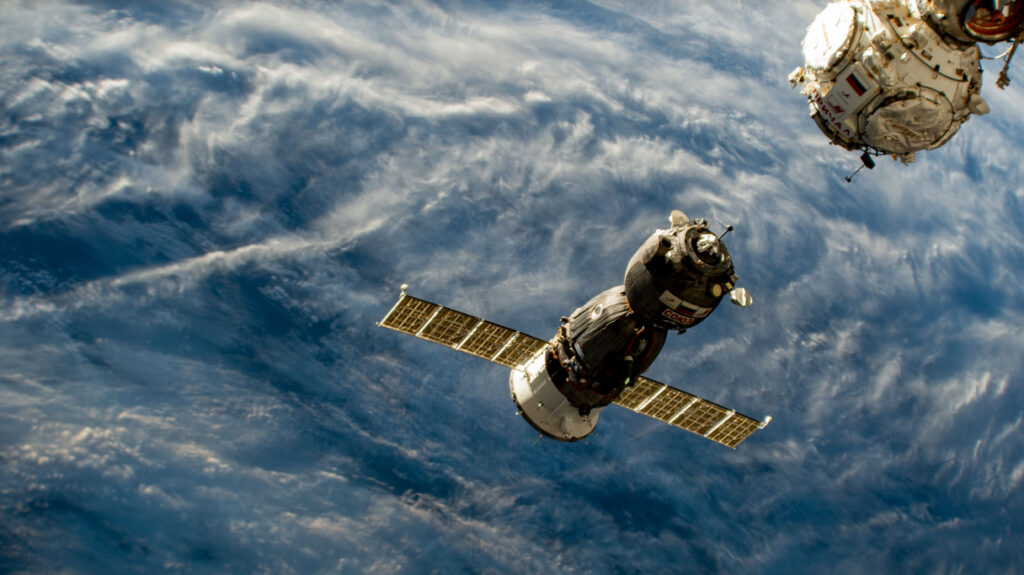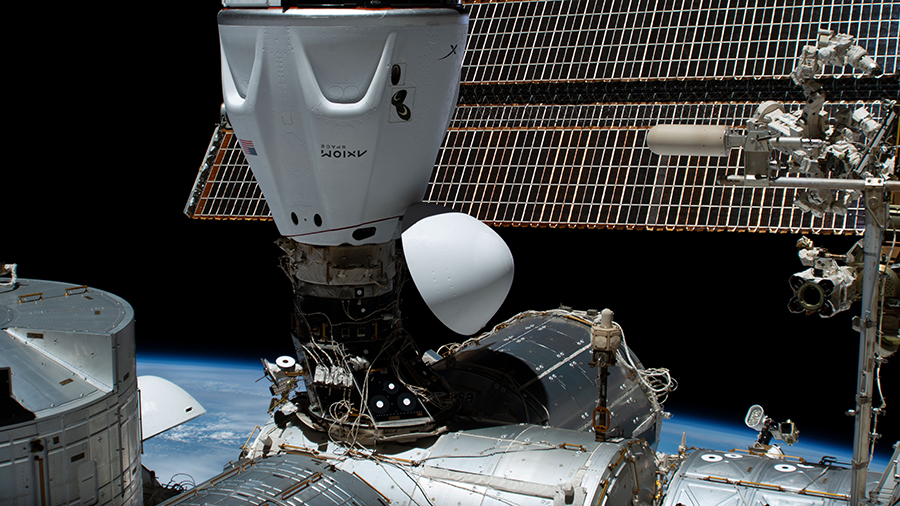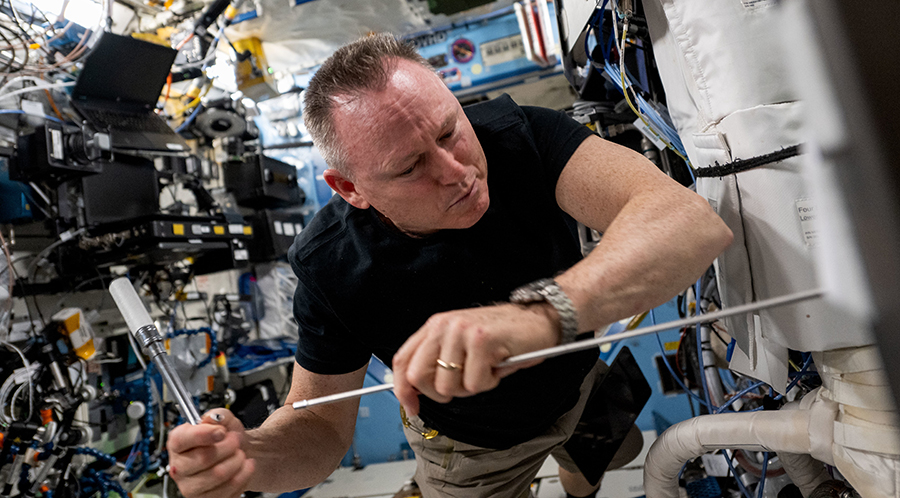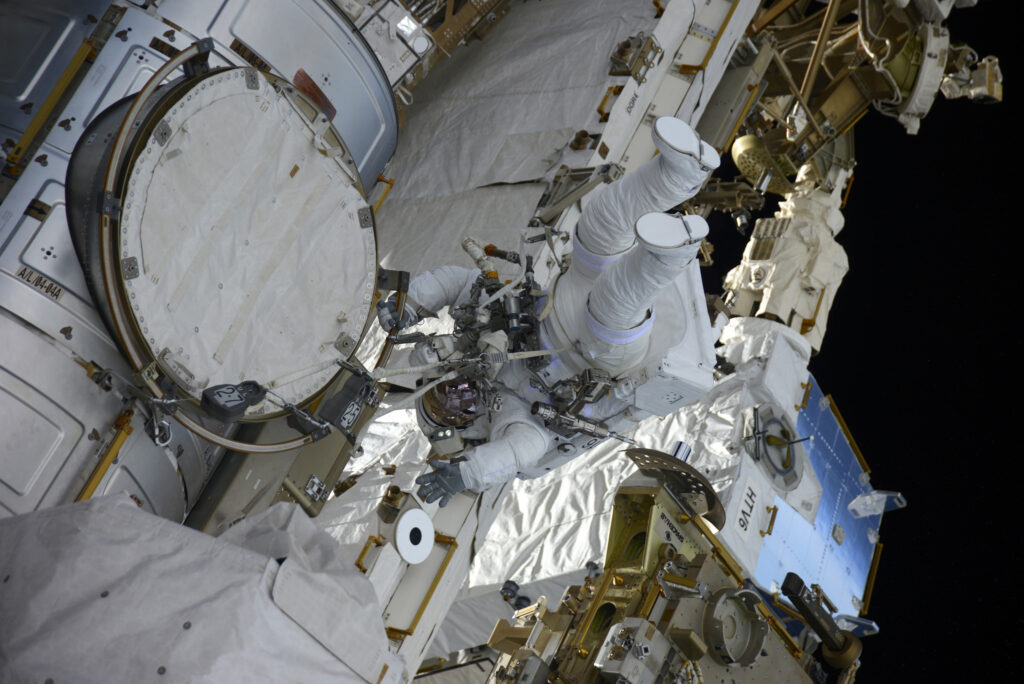
The ten residents living aboard the International Space Station have a jam-packed Monday as three Expedition 69 crew members are completing their final duties before departure and others complete an array of health exams and repairs to orbital payloads.
NASA astronaut Frank Rubio began his day replacing clogged pumps on the BioFabrication Facility. After lunch, he moved on to collecting biological samples for the Food Physiology investigation, which assesses if an enhanced diet helps astronauts better adapt to spaceflight. Near the end of the day, Rubio continued departure prep ahead of his journey back home to Earth.
Rubio, along with Roscosmos Commander Sergey Prokopyev and Flight Engineer Dmitri Petelin, will undock from the station’s Prichal module at 3:55 a.m. EDT on Wednesday, Sept. 27. The three long-serving crew members will take a short ride home, landing in Kazakhstan at 7:17 a.m. the same day. Following more than a year-long mission, Rubio is now the record-holder for the longest single spaceflight by a U.S. astronaut. He, along with Prokopyev and Petelin, will return after 371 days in space.
ESA (European Space Agency) astronaut Andreas Mogensen spent his morning on the station’s bicycle, CEVIS, partaking in the CARDIOBREATH investigation—a study that assesses the combined effects of cardiovascular and respiratory adaptions on blood pressure during spaceflight. In the evening, he donned virtual reality goggles to train for spacewalk emergencies in the unlikely event they would occur using SAFER, the Simplified Aid for EVA Rescue. Attached to the spacesuits, the device allows astronauts to safely return to the station if they were to become untethered. VR sessions allow astronauts to be “outside” of the orbiting laboratory while tracking movements of their hands and bodies during training.
NASA Flight Engineer Jasmin Moghbeli completed a suite of health activities today. In the morning, she took a cognition test for the ongoing Standard Measures investigation. She was later joined by NASA astronaut Loral O’Hara and JAXA (Japan Aerospace Exploration Agency) astronaut Satoshi Furukawa for ultrasound scans of arteries in the neck, clavicle, shoulder, and behind the knees, which helps doctors on Earth study how astronauts adapt to microcavity.
Moghbeli also took some time midafternoon to begin the uninstallation of the Cold Atom Lab science instrument in preparation for future repairs. Meanwhile, O’Hara conducted microbial research, analyzing surface and air samples that were collected last week, while Furukawa worked in the Kibo Laboratory Module continuing solid combustion research.
The other three cosmonauts aboard the orbiting laboratory split up duties as Flight Engineer Konstantin Borisov ran the Pilot-T experiment to practice piloting techniques and was later joined by Flight Engineer Oleg Kononenko to collect microbial samples around various Russian modules. Flight Engineer Nikolai Chub spent part of his day inventorying cargo then moved on to crew orientation activities.
Learn more about station activities by following the space station blog, @space_station and @ISS_Research on X, as well as the ISS Facebook and ISS Instagram accounts.
Get weekly video highlights at: https://roundupreads.jsc.nasa.gov/videoupdate/
Get the latest from NASA delivered every week. Subscribe here: www.nasa.gov/subscribe




